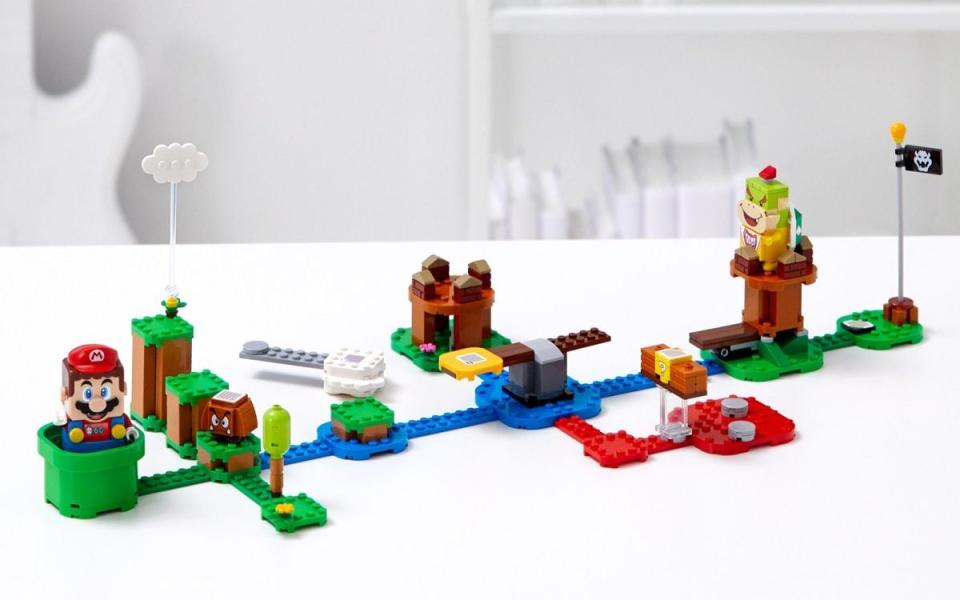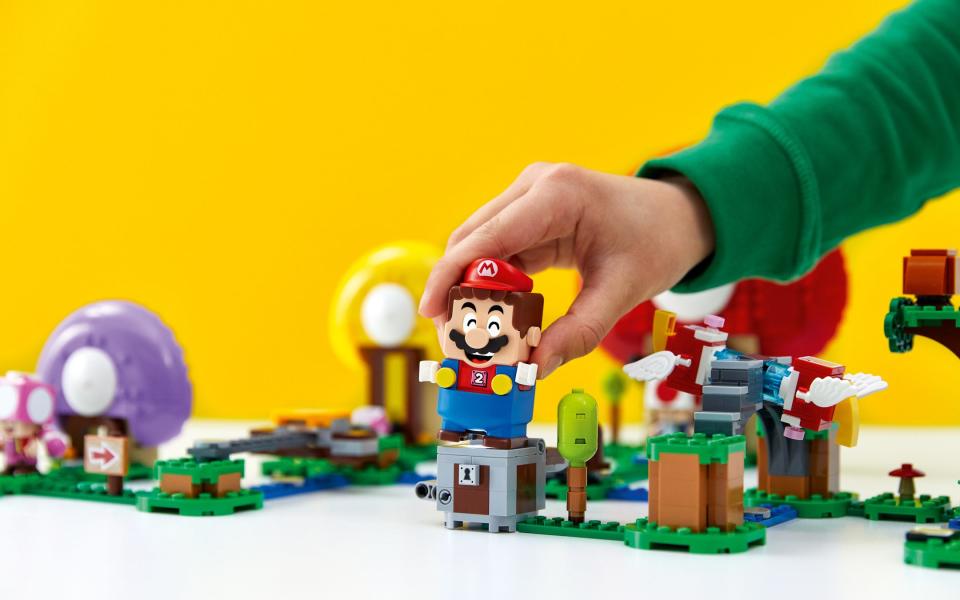Lego Super Mario review: quirky and creative translation to the real world for Nintendo's famous plumber

Throughout its gilded 70-year history, Lego has both driven and been driven by global pop culture. Few of the world's biggest fantasy properties remain untouched by the Danish construction toy's brickification. Star Wars, Harry Potter, Ghostbusters; all have long had their own intricate building sets and lavish models - a rite of passage extended more recently to newer phenomena such as Stranger Things and even Overwatch.
Nevertheless, there seems something particularly significant about the team-up between Lego and Japanese gaming giant Nintendo for this sprawling range of Super Mario sets. Few toy brands can lay claim to influencing as many childhoods as these two. Never competitors, as such, with Nintendo operating in the digital world and Lego the physical, but both driven by their own sense of identity and meticulous quality control.
As such, one can imagine the process to produce these sets was somewhat arduous at times, as the companies thrashed out a way of preserving those identities. Not that you would necessarily guess that from the sets themselves; unusual dioramas with a digital twist that captures the spirit of both.
It starts with Mario himself, of course. Rather than the traditional mini-figure, Lego Mario is a chunkier interactive toy with a light up LED face and chest, QR scanner, motion-sensing and Bluetooth. Switch him on and his eyes light up as he chirrups 'It's-a Lego Mario time' in Charles Martinet's recognisable tone. Lift him off the ground and he makes Mario's bounding jump sound, lay him down and he goes to sleep, remove his dungarees and... 'mamma mia!'.

In pre-release pictures I always thought that Lego Mario looked a little odd -with Mario's custom portliness squared off- but in the hands and up close he's a delight, while his digital antics were an instant hit with both my three year old daughter and her seven year old Lego-obsessed older brother. The sets, meanwhile, are a broad collection of what can only be described as Mario bits and pieces, used to put together your own 'levels' which can then be played by connecting to the mobile app.
The starter kit comes with Lego Mario and a simple level set, complete with starting pipe and goal flag. Expansion sets -of which there are several already- range from one-hit items such as a piranha plant and mine-cart challenge and more sprawling builds such as Bowser's castle. It's a modular approach that calls to mind Nintendo's Super Mario Maker, calling on you to take each part and combine them in different way before running Mario through it. Individual elements have QR codes that Mario reads as he passes over them -enemy Goombas and Koopa Troopas have them on their backs to be bopped- while the toy can also recognise if it is walking over grass, water or fire based on their colour.
Pop Mario in the starting pipe while connected to the app (which also contains the building instructions) and it begins a 60 second timer. You then need to transport Mario from the pipe to the goal flag, collecting as many coins from your construction as possible by bopping enemies, 'floating' on clouds and staying upright on spinning platforms. Larger expansion sets come with time blocks that Mario can jump on to extend the timer, allowing you to stretch it as far as you can manage.
It's smart stuff and there's a certain magic to the recognisable Mario tunes and sounds popping out from the figure as you shuffle him across the level now sprawling across your kitchen table. The app encourages you to snap a photo and share your builds online, while it will also provide weekly challenges. The first of which, for instance, asks you to build up, incorporating your 'favourite chair' and having Mario bound up onto it in the most creative way possible.
Like many Lego aficionados, my son adores building sets and repurposing bricks to make his own ideas, but rarely does he actually play with his constructions. They are either put on his shelves for display or dutifully taken apart to be built again. Lego Super Mario is different, even without connecting the figure to the app there was plenty of role-play, while the challenge of setting different runs with the sets provided is something his Lego-trained mind took to with aplomb.

It sparks a different kind of creativity than your traditional bricks, meaning that Lego collectors may find the builds a little simplistic and the disparate bits trickier to display. Especially for the significant price; the starter kit will set you back £50, many expansions are £15-£25 each, Mario costumes are £9, while Bowser's Castle is the most expensive addition at £90. Individually they might not approach Lego's more lavish creations -with the company's products always commanding eye-watering price tags- but collectively it might not offer enough intricacy for more... experienced... Lego fans' cash.
There is definitely some real wit to some of the larger builds, however. The Toad Town set, for instance, has delightfully chunky mushroom houses replete with hidden switches hiding treasure chests, while slamming Mario on a plank to flip up a castle is a lovely nod to the original Mario Bros. boss battles. But these are toys through and through; most builds are quickly assembled for play, not to be pored over and displayed.
(This might, however, be more of a job for the £200 Lego replica NES console, complete with CRT TV and crank-ran Super Mario Bros)
This is not a criticism, per se, but an indication of how Super Mario is different to your usual Lego pursuit, finding a niche between the tactile creativity of building blocks and the allure of digital play. It combines the particular skillsets of the world's most famous toymakers with a deft charm and high quality, then, and you would not expect anything less.

 Yahoo News
Yahoo News 
